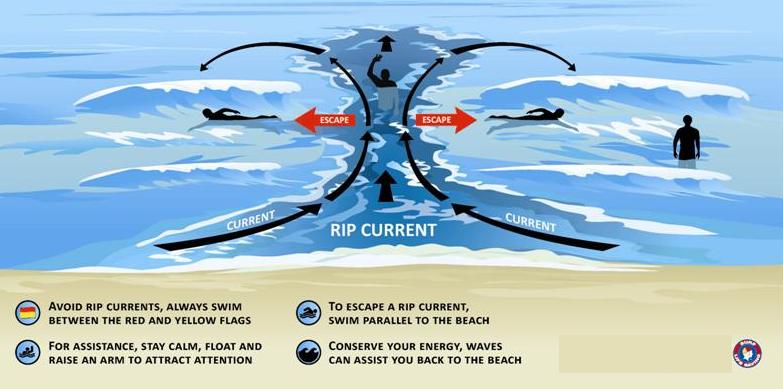
The Murud tragedy has brought home a graphic lesson on the tidal currents to avoid while on a seaside vacation. And, it may soon be forwarded to you on WhatsApp. A picture message has gone viral on the messaging service — highlighting the rip current, which has the potential to pull a person deep into the sea — in a bid to avoid the Murud fate in future.
The message asks people to
observe the sea for some time before entering the water. If there is an ocean wave void (a disjointed portion of wave in the middle), then there is a rip current in the sea directed towards the ocean and away from the shore.
At times, it can be strong enough to claim lives. These currents are narrow channels of fast-moving water that are quite strong.
Geography experts have endorsed the images, saying it’s one of the basic ways to identify whether the waters are safe or not. “It is actually a rule of thumb that one should not enter the water when there is a rip current. But sometimes, it may not be prominently visible despite observation. If it is seen, one should not enter the water.
Yet another way of understanding if the waters are safe, which is mostly followed by people abroad, is throwing a floating object tied to a rope in the water. The object’s behavior gives one an idea about the behavior of water and the current. However, the object should be hauled out by pulling the rope to avoid pollution,” shared Dr Surendra Thakurdesai, head of department, geography, at Gogte Jogalekar College in Ratnagiri.
A rip current forms a marked shallow channel, which breaks through the shore bars that are generally horizontal. Between cusps of coarse sand is some fine sand where the bay is easily visible. It is in these bays that strong rip currents originate. Besides these, Dr Shrikant Karalekar, dean of the earth sciences department at Tilak Maharashtra Vidyapeeth, also spoke of other markers that one can look out for before entering the sea. “Along the beach, there are crescent shaped bars which develop to between 100 and 2000 meters long. It is dangerous to cross these bars, which are often ignored. Another easy way is to feel the movement of sand. If the sand is pulled inside, it is better to refrain from entering the water from there. Also, at some places, if there is fine grains of sand that stick to each other as opposed to coarse sand, then the current is strong in that area,” warned Karalekar, saying that people can also use tracer dyes, which can show the direction in which currents are flowing.
The administration has prepared more generic guidelines suggesting that people should take the advice given to them.
The guidelines talk about avoiding drinking before entering the sea or refraining from going into deep waters
So far, no plan has been put in place to help people detect the dangers of the sea themselves. Rather, civic officials have taken to putting up flags to demarcate areas where one can swim and parts where one cannot. “Besides following the general guidelines, we are creating awareness among the people to identify places where the creeks meet the sea and refrain from those areas. The Murud incident happened at one such spot that is often susceptible to strong currents,” said Sagar Pathak, Raigad district’s disaster management officer.
About the author